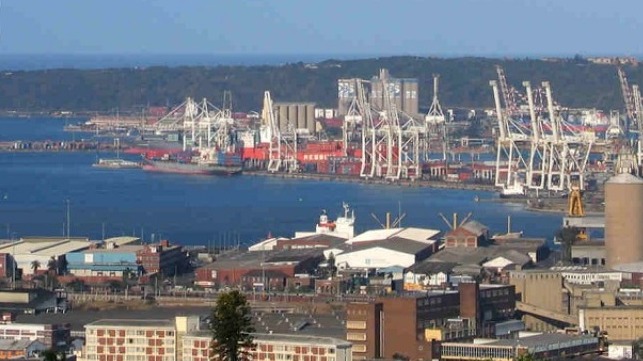Bulker Ordered Out of Port of Durban After Emitting "Toxic Fumes"

South African officials were forced to evacuate the bulk carrier NS Qingdao from the port of Durban and send it to a protected anchorage after it started releasing toxic fumes.
The South African Maritime Safety Authority (Samsa) said NS Qingdao was discharging at the port of Durban when some of its chemical cargo became unstable due to contact with rain water. This caused the cargo to release toxic fumes, Samsa said.
In response, Samsa ordered the vessel to depart and head for a safe anchorage. Under escort, NS Qingdao headed for St. Helena Bay - some 850 nautical miles away on the Atlantic coast of South Africa - so that she could ventilate her hatches offshore.
“Samsa directed the vessel to sail to a protected anchorage under the escort of the tug Umkhuseli. The vessel has a full team of salvors, chemical experts, hazmat teams and other emergency personnel on board to manage the operation safely following defined emergency protocols,” said Capt Vernon Keller, Samsa's acting COO.
He added the owner of the vessel is cooperating with the authorities and has been very proactive in helping to contain the situation.
“The cargo will be discharged into skips, chemically neutralized and landed ashore at an approved dumping site in a safe and controlled manner. The vessel poses no immediate threat to the marine environment and humans,” he said.
The 57,000 dwt bulk carrier NS Qingdao was built in 2011 and sails under the flag of the Marshall Islands. The ship arrived in Durban from Gwangyang, Korea towards the middle of last month. The chemical composition of her cargo was not disclosed.
The toxic fumes scare is the latest in a series of incidents that have occurred across various ports in South Africa adversely impacting operations. They include back-to-back fires, civil unrest, violence, protests and cyberattacks.
With a capacity of 2.9 million TEUs, Durban is South Africa’s busiest port facility with a total cargo throughput of 83.1 million tons in 2018. Authorities in South Africa are implementing an ambitious $7 billion plan to modernize the facility to improve its efficiency and increase its containerized freight capacity to more than 11 million TEU.
